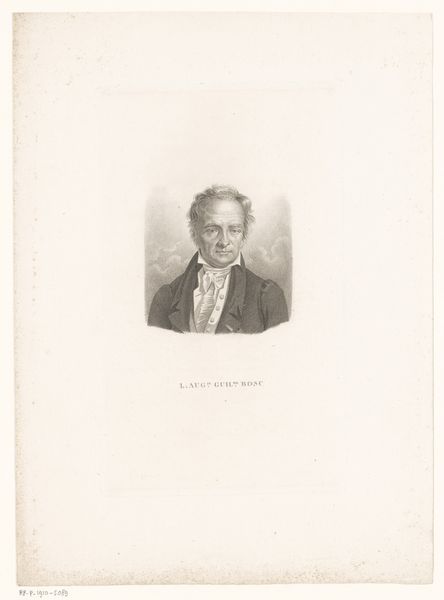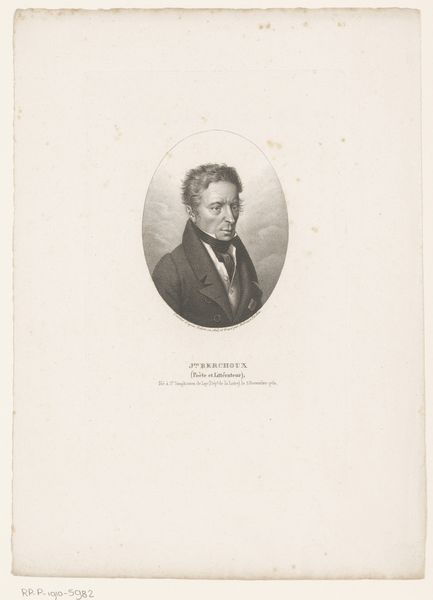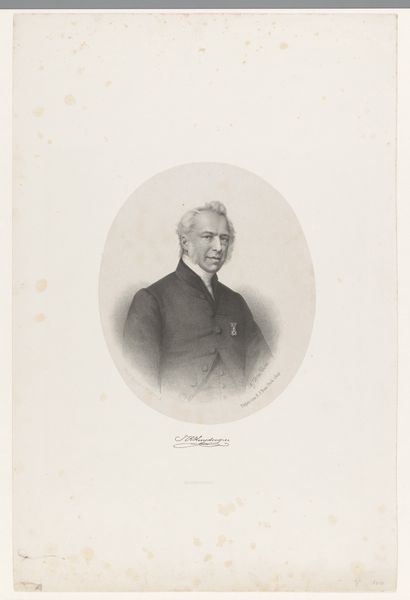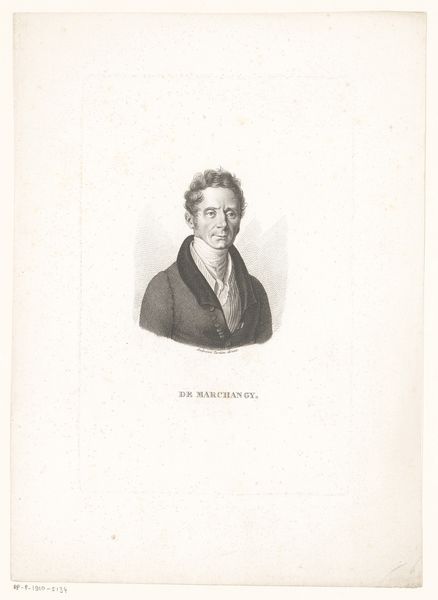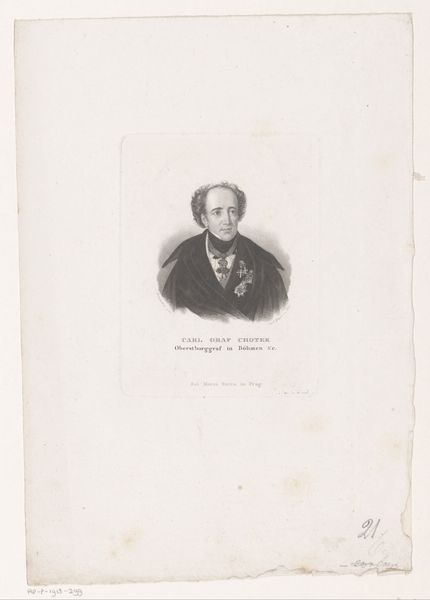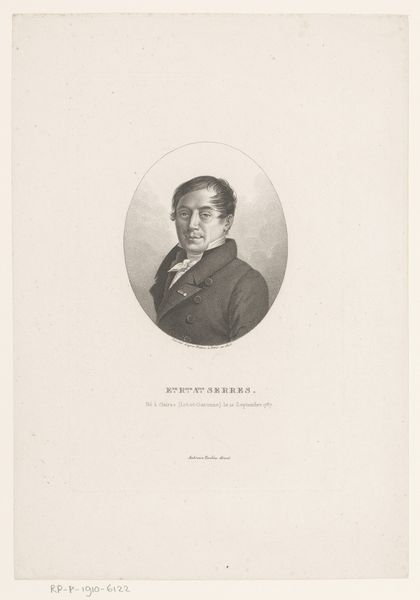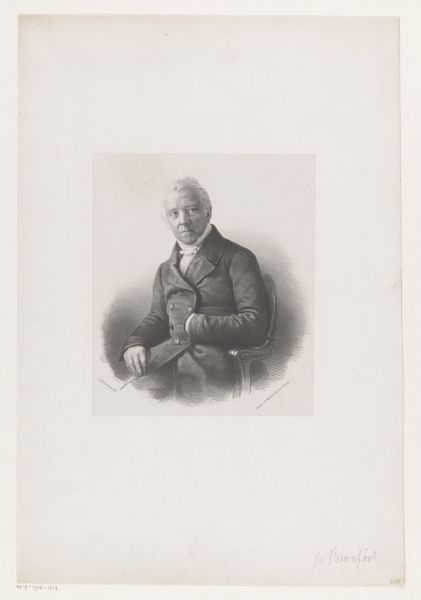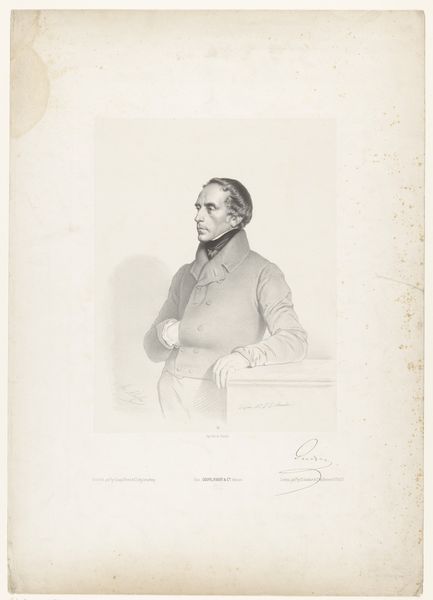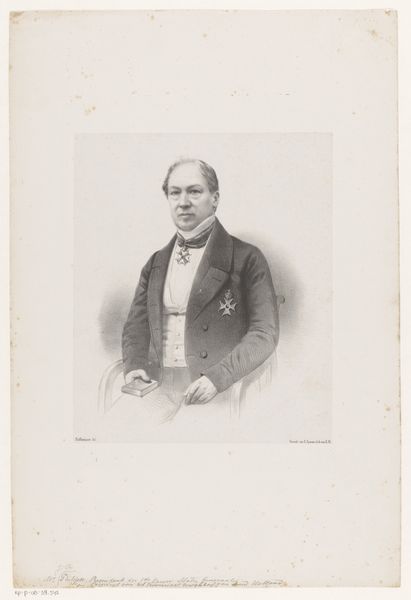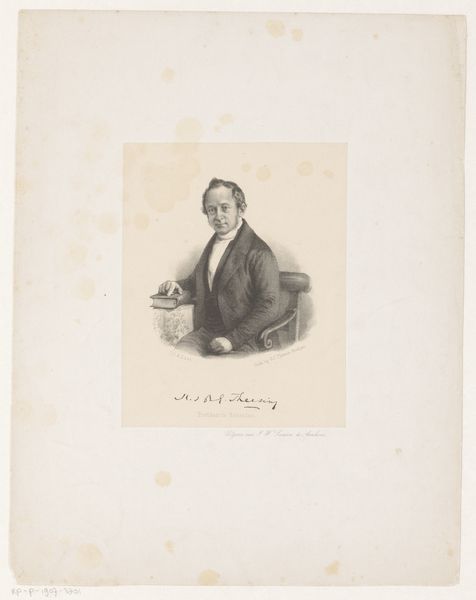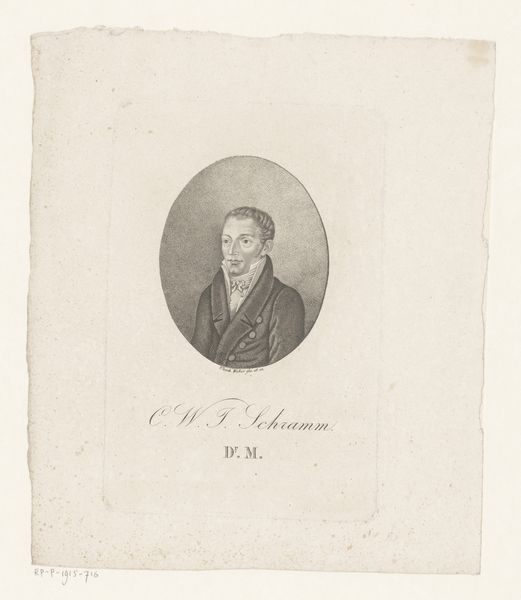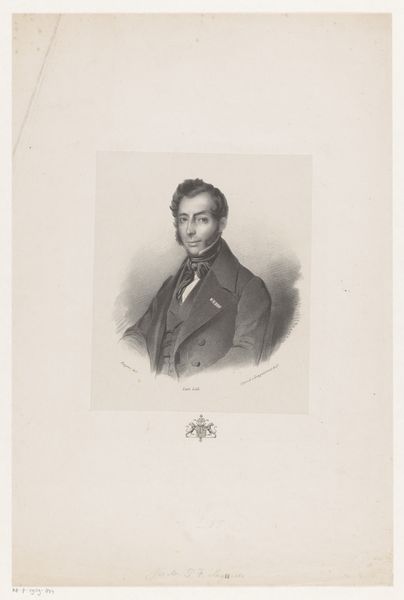
print, engraving
#
portrait
#
neoclacissism
# print
#
academic-art
#
engraving
Dimensions: height 213 mm, width 141 mm
Copyright: Rijks Museum: Open Domain
Editor: This is a print titled "Portret van Jean-Pierre-Joseph d'Arcet" created sometime between 1818 and 1832 by Charles Aimé Forestier. The delicate engraving gives it an almost ethereal quality, and I find the composition rather intriguing given how much empty space surrounds the figure. How would you interpret the visual impact of this choice of composition? Curator: The composition certainly speaks to the artistic currents of its time. Note how the figure is rendered: with precise lines and controlled tonal variations. Forestier uses engraving to emulate the clarity and order prized by Neoclassicism, but then contrasts this clarity with the stark emptiness that frames the subject. Editor: So, the space isn't simply empty; it is an integral part of the visual vocabulary? Curator: Precisely. It emphasizes a sense of detachment, or perhaps even an intellectual austerity appropriate to the subject, given he was a renowned chemist. The limited tonal range, moving primarily between shades of grey, underscores the severity of the visual experience. This restrained palette prevents any emotional distraction, pushing us to examine the meticulous rendering of form instead. Editor: That's fascinating. I initially saw it as negative space, but you’re highlighting how it is doing so much to define the essence of the piece. How do you see the engraver's technique functioning within this context? Curator: Observe the density and directionality of the engraved lines. Forestier modulates these carefully to create an illusion of volume and texture. The parallel lines that describe d'Arcet’s coat, for instance, curve subtly to suggest the contours of his body. These visual elements underscore a very particular way of seeing that prioritizes order, reason, and technical mastery above all. It reframes the printmaking tradition. Editor: Thank you! Now, I see it as a really compelling interplay between technique and aesthetic intent. Curator: Indeed. And hopefully a demonstration of the kind of careful seeing that unlocks so much meaning.
Comments
No comments
Be the first to comment and join the conversation on the ultimate creative platform.
